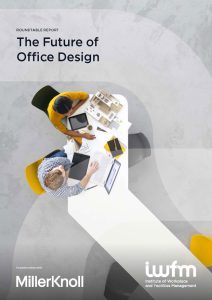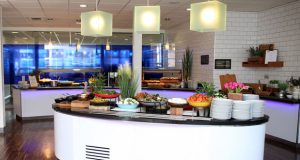 Most companies remain uncertain about what their post-pandemic workplaces will look like according to new research released by the Institute of Workplace and Facilities Management (IWFM) and office furniture company, MillerKnoll.
Most companies remain uncertain about what their post-pandemic workplaces will look like according to new research released by the Institute of Workplace and Facilities Management (IWFM) and office furniture company, MillerKnoll.
The research, titled ‘The future of office design’ invited leading workplace and facilities management experts from Credit-Suisse, Cushman and Wakefield, Ford, Gensler, Nationwide, and Red Hat to share insights on where companies currently stand on the future of the office and how the future workplace will be designed.
For most employers, the discovery process for finding new ways of working continues with experimentation being the current preferred approach. However, experts agree that open communication between employers and employees about what’s right for each individual and how they function best is critical.
Elaine Asal, Senior Associate at Gensler commented: “We have found that people are more willing to try something, even if they’re hesitant about it, as long as it’s for a short period of time and they can give feedback and feel their views have been heard so that the next idea can be adjusted accordingly. This kind of follow through builds trust with the employees and engenders the ability to continue to experiment.”
The risk to companies that fail to involve their people in workplace decisions and the rewards of embracing a collaborative process were set out by Cushman and Wakefield’s IFM Workplace Experience Director, Zoe Humphries: “Choice is really important to people, and the genie is now out of the bottle on that one. People are really voting with their feet if they’re not getting that choice. What they really like is unfettered flexibility.”
Humphries added: “By creating an amazing employee experience, you could improve everyone’s efficiency.”
Peter Brogan, Head of Research and Insight at IWFM, commented: “The workplace and facilities management profession has a crucial role to play in recommending, designing and enabling new ways of working that meet individual and organisational needs. Each organisation has its own circumstances and requirements, but as this research shows, experts agree that a flexible, personalised approach will be the best solution for most.”
Joseph White, Director of Design Strategy at MillerKnoll, shared guidance for implementation: “One of the things we heard first-hand is that small signals can send big messages – for better or worse – and that a change in mindset can open up new opportunities. Mutual trust and transparency in communication are critical for balancing individual needs with organisational objectives. By actively maintaining that balance, the outcomes for all will be improved as we design a better tomorrow.”
IWFM and MillerKnoll’s ‘The future of office design’ report dives into the main considerations for developing a future-facing workplace strategy, including office design, technology, workplace policies, inclusivity and wellbeing, and the legal landscape. The key takeaways offer important insights into how businesses are developing and experimenting with new ways of working, while a helpful guidance checklist outlines the points to consider when redesigning the workplace and rethinking your practices.
Developing an effective workplace experience is a balancing act.
This years annual insight report delves into the work-life balance we now face in our day-to-day lives. How the new hybrid working world sees us challenge the balance of getting these things right and what workplaces can do to support its colleagues.
Find out how your organisation can get it right by clicking here to download Balanced Workplaces, a Claremont Group Interiors Insight Report Issue 6.




